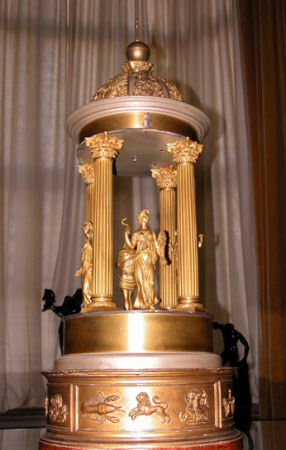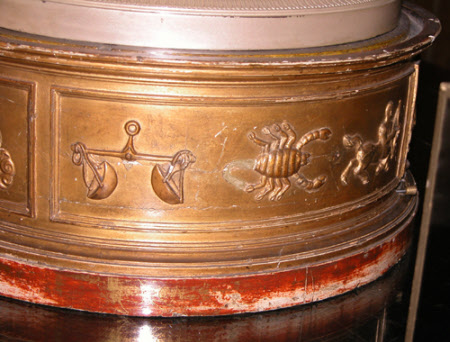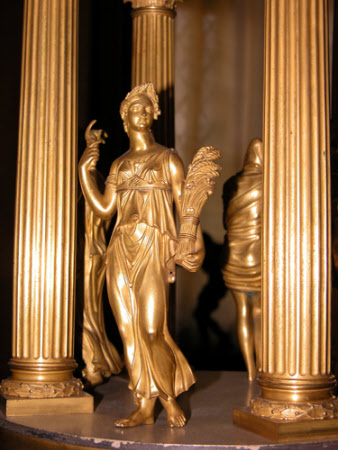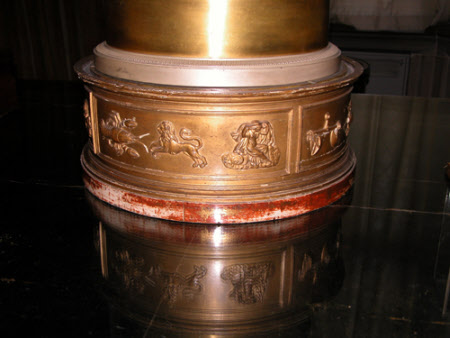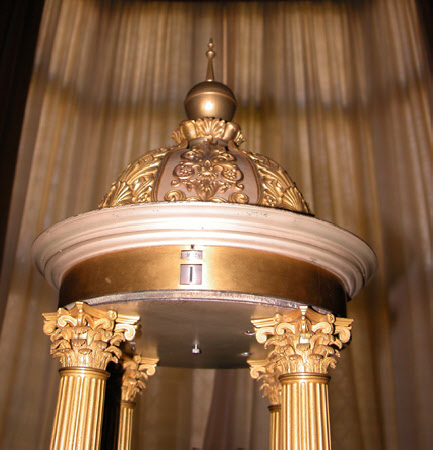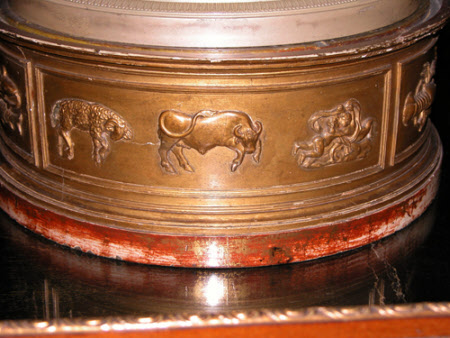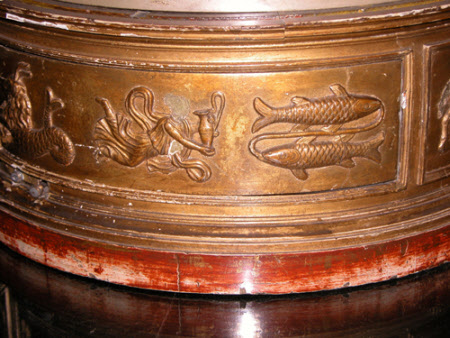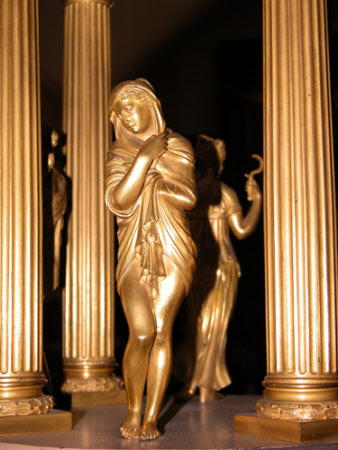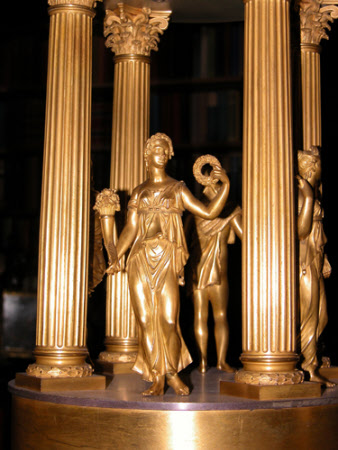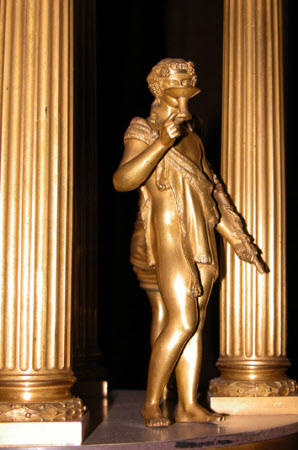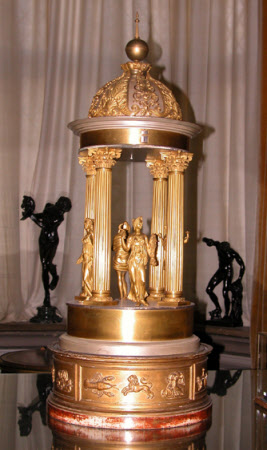Clock
Julien Le Roy (Tours 1686 – Paris 1759)
Category
Horology
Date
1830
Materials
Wood and ormolu clock.
Measurements
990 x 380 x 380 mm; 445 mm (Diameter)
Place of origin
Paris
Order this imageCollection
Anglesey Abbey, Cambridgeshire
NT 514766
Summary
Directoire ormolu Temple clock, striking movement showing through 4 apertures in frieze beneath domed roof with ball and sphere finial, 4 Corinthian columns with girl figures of the seasons between, deep plinth base raised on giltwood circular plinth stand containing musical movement and decorated with signs of Zodiac. 14-day French striking musical table clock in the form of a classical temple with an ormolu 4 pillar case, c.1830. 2 train going barrel movement with cylinder platform escapement and countwheel half hour striking on bell. Independant 4 air, Swiss going barrel musical movement with solid comb, in base. Drum dials to clock movement, with apertures on four sides with arabic minutes indicated above roman hour digits, all in upper cupola of temple, supported on the 4 ormolu corinthian columns, with four Muses below, standing on circular ormolu base. Whole clock stands on giltwood base containing musical box. The central finial on the top is a later English replacement. The clock originally had a singing bird mechanism in the upper part of the case, all now missing. Inscribed 'Le Roy and Fils, H'ers du Roi a Paris'. 'Montandon 1833'. 'Parker Bowles 1923'. Pierre Le Roy, born 1717, died 1785. From Robersons catalogue 'Upon a gilded circular base, round which are carved the zodiacal signs, are four finely proportioned Corinthian columns supporting a frieze and cornice. Delicately chiselled figures representing each of the four seasons are set between these columns. Round the frieze over each of these four figures are the hour and minute numerals, so placed that the time may be seen from whatever angle th clock is approached. By means of various adjustments it is possible for these dials to indicate the time of each of the four continents. Over the cornice is a massive dome, heavily embossed and carved, which supports a tuli-shaped ormolu carving. Within the tulip is a gilt ball which on the chiming of the hour, gradually opens, disclosing a minute bird of paradise, which with flapping wings and moving beak, sings its song with remarkable clearness. With the completion of the warbling the gilt ball closes again, concealing the bird from sight'.
Provenance
Bequeathed to the National Trust by Huttleston Rogers Broughton, 1st Lord Fairhaven (1896-1966) with the house and the rest of the contents.
Makers and roles
Julien Le Roy (Tours 1686 – Paris 1759)
